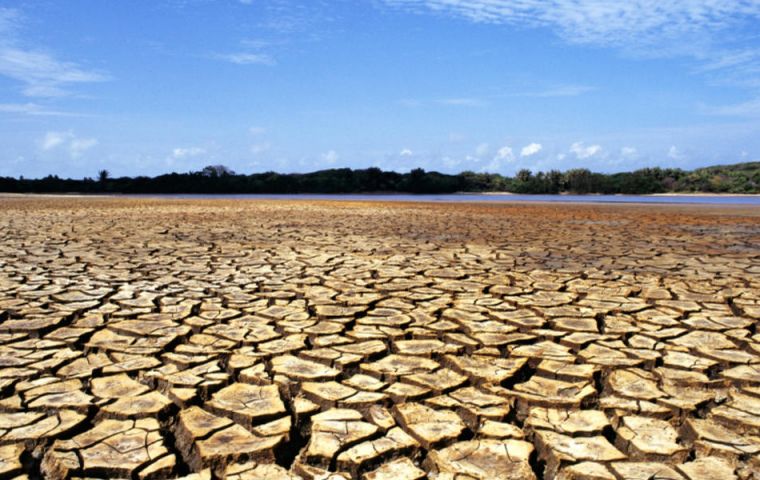MercoPress. South Atlantic News Agency
Latin America up for increasingly worsening weather
 Food and water supplies will be affected, the UN agency's report warned
Food and water supplies will be affected, the UN agency's report warned The consequences of climate change will continue to worsen in Latin America and the Caribbean, affecting health, development, and food supplies, according to a report from the UN's World Meteorological Organization (WMO) released Friday.
The document, titled “The State of Climate in Latin America and the Caribbean 2021” also heralded extreme weather, such as drought, melting ice and deforestation would continue with “profound repercussions” on ecosystems, on food and water security, on people's health and on the fight against poverty.
“Unfortunately, impacts in the region are expected to worsen as the atmosphere and oceans continue to change rapidly. Food and water supplies will be affected. Countries and cities, as well as the infrastructure needed to support them, will be exposed to increasing risks. People's health and well-being will be adversely affected, as will natural ecosystems,” the report goes.
The document also showed that the warming trend in Latin America and the Caribbean continued in 2021, with the average rate of temperature increase being about 0.2 degrees Celsius per decade between 1991 and 2021 compared to 0.1 degrees per decade between 1961 and 1990.
The WMO paper also noted that glaciers in the tropical Andes have lost at least 30% of their area since 1980, while sea levels in the region have continued to rise at a faster rate than globally, and the 2021 Atlantic hurricane season was the third most active ever recorded in the basin, with 21 storms, including seven hurricanes.
Also in 2021, extreme rainfall led to flooding and landslides, while deforestation in the Brazilian Amazon rainforest reached its highest level since 2009. “Drought conditions are likely to intensify in the Amazon, northeastern Brazil, Central America, the Caribbean and parts of Mexico, while the effects of hurricanes could increase in Central America and the Caribbean,” the document also warned.
“Climate change threatens vital systems in the region, such as the glaciers of the Andes, the coral reefs of Central America or the Amazon rainforest, whose situation is close to critical and is at risk of irreversible damage,” the report further underlined.
According to data from the United Nations Office for Disaster Risk Reduction (UNDRR), 175 disasters are expected to take place in Latin America and the Caribbean between 2020 and 2022, the WMO document also forecast.




Top Comments
Disclaimer & comment rulesCommenting for this story is now closed.
If you have a Facebook account, become a fan and comment on our Facebook Page!